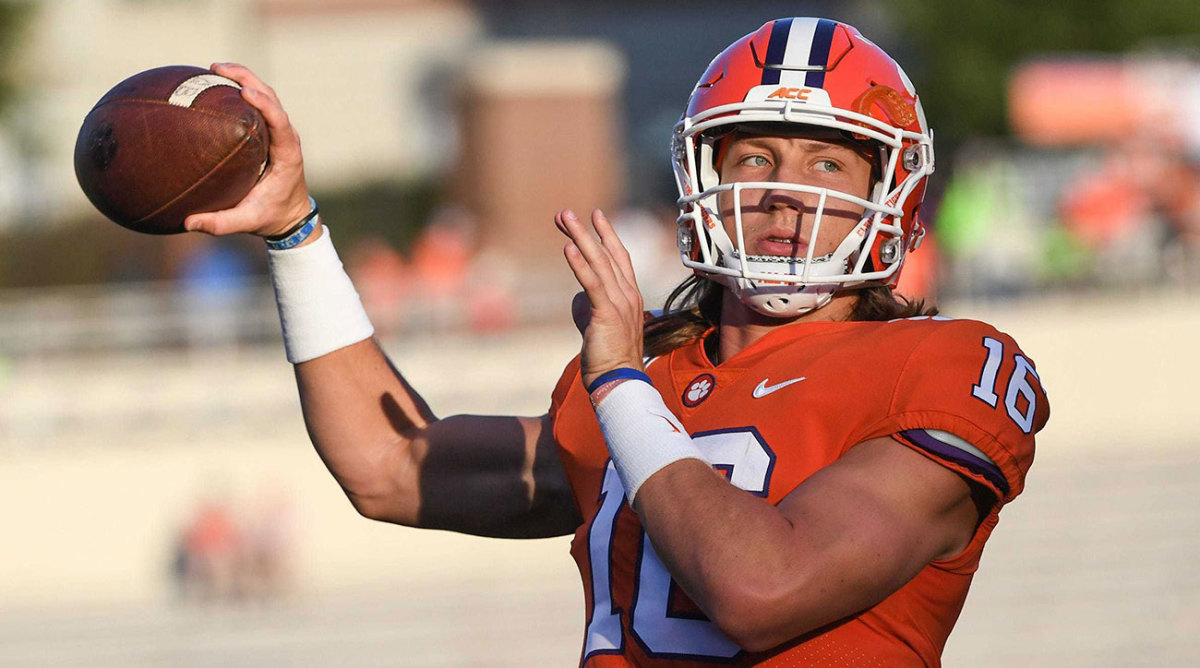Trevor Lawrence Watch: What Every 0–2 Team Would Do With the No. 1 Pick
With the exception of the 2013 Texans, who began the season 2–0 and proceeded to lose 14 straight games, and the 2015 Rams, who began the season 1–1 before trading up to attain the No. 1 pick, every other team picking No. 1 over the last 10 years has started the season 0–2.
While 12% of teams that start 0–2 also make the playoffs (a number that could increase given the expanded playoff field in 2020), the initial grouping of winless teams after two weeks can provide a (somewhat) narrowed field as to who might be taking the best collegiate player in the country in a matter of months.

Normally we wouldn’t get that excited about the draft this early, especially when the best player might be a project quarterback or a defensive end who will make a significant but not league-altering impact. But when the inevitable player choice is a franchise-transforming quarterback the likes of which we have not seen atop the draft since 2012, any indication of which team might be headed in the direction of that pick is significant. Yes, we’re firing up Trevor Lawrence watch.
This is especially fascinating when you look at the teams that are currently 0–2: the Jets, Dolphins, Bengals, Texans, Giants, Eagles, Vikings, Lions, Falcons, Panthers and Broncos. (We can throw out the Texans, because the Dolphins' own their first-round pick.)
Of the teams remaining, four have drafted “franchise”-type quarterbacks in the last three years: the Dolphins (Tua Tagovailoa, first year of his rookie contract), the Bengals (Joe Burrow, first year of his rookie contract), the Giants (Daniel Jones, three years plus an option year remaining on his rookie contract) and the Jets (Sam Darnold, two years plus an option year remaining on his rookie contract).
The remaining quarterback situations are also interesting:
• Eagles: They signed Carson Wentz to a four-year, $128 million extension last year that cannot be wriggled out of until at least after the 2021 season (with a significant, $24 million-plus dead cap hit). And, for what it’s worth, they also just invested a second-round pick in his backup, Jalen Hurts.
• Vikings: They just signed Kirk Cousins to a two-year, $66 million extension this year that cannot be wriggled out of until at least after the 2022 season.
• Lions: They are in Year 3 of the five-year, $135 million extension Matt Stafford signed in 2017. Detroit can get out of the deal after this year by incurring more than $20 million in dead cap space.
• Falcons: They came to terms with Matt Ryan on a five-year, $150 million extension in 2018 that would be hard to wriggle out of until after the 2021 season, while incurring more than $20 million in dead cap space.
The Broncos and Panthers are a little more flexible. Drew Lock is the Broncos’ quarterback for now, in the second year of his rookie deal. While he has long-term potential, a rookie contract for a second-round pick isn’t prohibitive. In Carolina, Teddy Bridgewater is in the first year of a three-year, $63 million deal that, if the Panthers were to bottom out, would be a high but perfectly reasonable price for a valuable bridge quarterback and mentor.
In my mind, this list of 11 teams creates a few potentially chaotic scenarios and a few others that are worth keeping an eye on. For example …
If the Broncos, Panthers or Vikings get the No. 1 pick, they can take Lawrence and nobody will bat an eye.
If the Falcons get the No. 1 pick, it could create a Philip Rivers–Drew Brees scenario in Atlanta. Ryan is 35. Would the Falcons take Lawrence and trade Ryan? Would they sit Lawrence for a year? Who would be their coach? Who would be their general manager? What could they get in return for Ryan, one of the best quarterbacks of his era?
If the Lions get the No. 1 pick, then similar to Atlanta, they would probably try their best to perfect a transition from one of the best quarterbacks in franchise history to a younger player. Given ownership’s messaging heading into the season, the team would almost certainly be working with a new coach and general manager. Stafford is only 32 and could net the Lions an additional first-rounder in return.
If the Bengals get the No. 1 pick, they can trade that selection for unquestionably the biggest draft haul in modern history, using the pieces to build a robust lineup around Burrow.
If the Jets, Giants or Dolphins get the No. 1 pick, they’d enter into one of the most picked-apart decision-making processes in recent history. The Giants and Dolphins, especially, would face the prospect of moving on from a quarterback they barely have an evaluation on, forcing them, like the Cardinals in 2019, to cover their intentions while secretly shopping their incumbent quarterback in the background. Or, like the Bengals would do, they could dig in on their selection from 2018, 2019 or 2020, insisting that the pick haul is more valuable. Dave Gettleman could even take another first-round running back.
If the Eagles get the No. 1 pick, they’d be forced to make an incredibly difficult evaluation on a young, vacillating quarterback still under contract. Doug Pederson and Howie Roseman would need to make a call on Wentz, a player who earned them a No. 1 seed and brought them to a Super Bowl, and who gutted the Eagles into the playoffs in 2019. Wentz is one of the more polarizing quarterbacks of his era.
